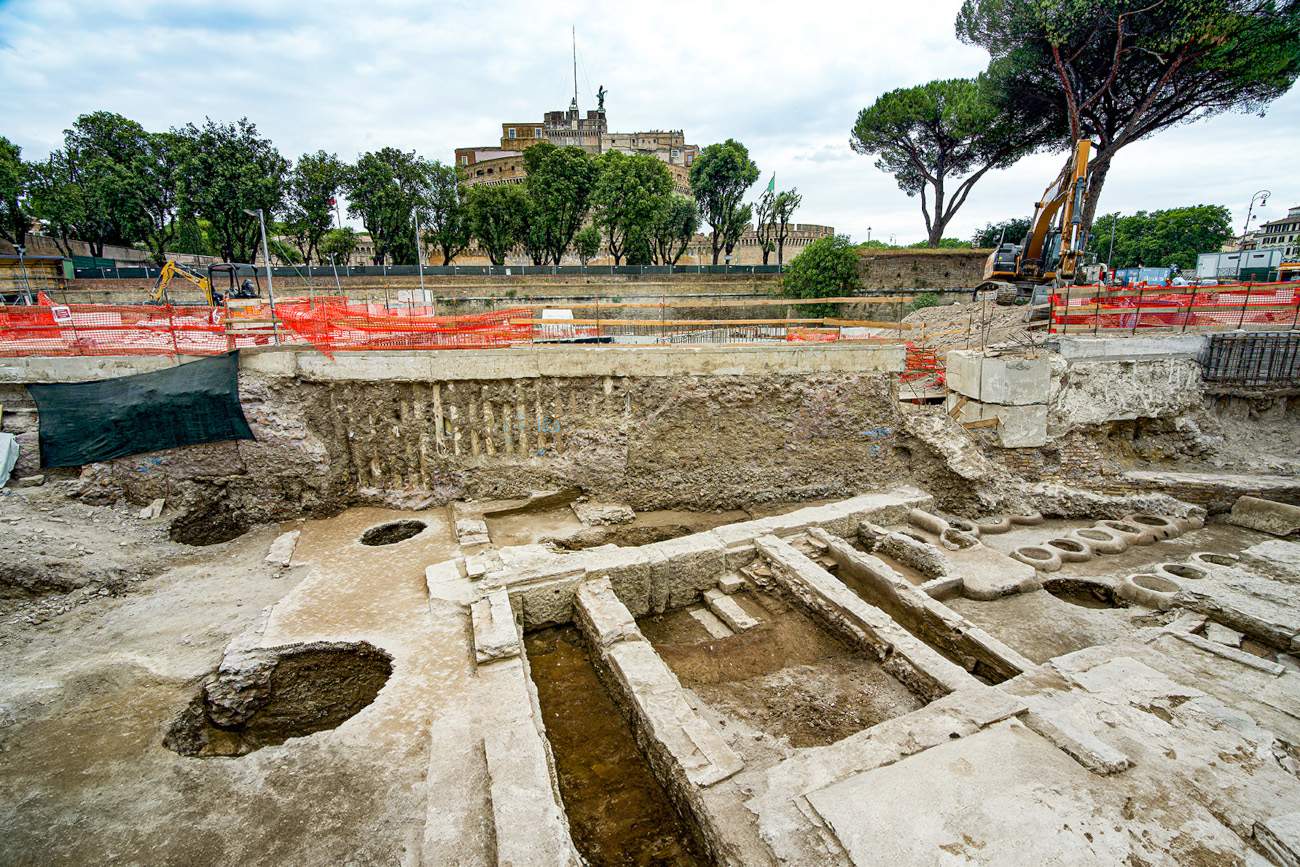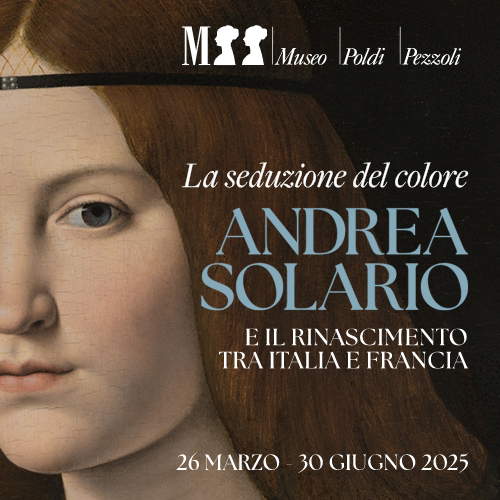Rome, a fullonica, mosaics and various archaeological finds resurface from excavations in Piazza Pia
A fullonica, dating back to the second century A.D., or an open-air facility for washing, removing stains and preparing cloths and clothes, as well as mosaics and various finds, have emerged from the Piazza Pia site in Rome. A number of tanks used for washing and pressing remain from the fullonica, as well as large buried vessels(dolia) used for soaking cloths in detergent, usually consisting of urine. The close proximity to the Tiber ensured a rapid and abundant supply of water, an indispensable element for the operation of these facilities. The open-air structure of the plant allowed the dispersion of miasmas, which must have been considerable. Not surprisingly, this type of activity was usually located in peripheral areas of ancient urban centers.
The project to redevelop and pedestrianize Piazza Pia, located between Castel Sant’Angelo and Via della Conciliazione, was financed with 79.5 million euros allocated for the Jubilee. This transformation will convert the square into a vast pedestrian area, creating a direct connection between Castel Sant’Angelo, Via della Conciliazione and St. Peter’s Basilica. The initiative aims to provide pedestrians with a safe area and, at the same time, to improve vehicular traffic through the construction of an underpass that will connect to that of the Lungotevere in Sassia. The work, managed by Anas in agreement with Roma Capitale, is expected to be completed by December 2024.
During work on the underpass, archaeological investigations have uncovered new discoveries that offer a novel view of Rome’s history and urban landscapes. The area in question, in ancient times, housed prestigious suburban imperial residences (the horti Agrippinae and horti Domitiae). These mansions, located on the right bank of the Tiber, overlooked the river in spectacular fashion, with porticoes, promenades, and gardens.
The archaeological remains uncovered during the work will be carefully reassembled and musealized in theCastel Sant’Angelo area, ensuring a direct connection with their context of discovery. The project includes the creation of an archaeological area in the gardens of the Castle and the musealization of the finds within the spaces of Castel Sant’Angelo. The goal is to reintegrate and enhance the cultural significance of the discoveries by improving accessibility, usability, and both museum and digital enhancement. This integrated approach will enable visitors to better understand the historical significance of the finds in relation to their original environment.
“Piazza Pia will emerge further enriched,” said Roma Capitale Mayor Roberto Gualtieri. “This is really an emblematic case of how institutional collaboration and the right vision of the meaning of the protection and enhancement of our cultural heritage can lead to a doubly positive solution: thanks to the construction site, we have discovered this beautiful Fullonica and the other findings, which we will be able to make known and enhance, but at the same time, we will also be able to realize the underpass on schedule.”
“This part of Rome will again be made visible to everyone, and as a citizen I can only express a sense of deep gratitude. It is truly significant that where we are trying to create for the Jubilee a space to make the meeting between people more alive, as Piazza Pia will be, a laundry has been found precisely, which was the meeting place of the people, of the people, of the women of the time,” said Monsignor Rino Fisichella. “An extra thank you also because the time frame for the delivery of the work, which as always we have been guaranteed and as we have always believed, will be maintained, despite the findings that once blocked everything.”
“Emergency archaeology for the construction of the Piazza Pia underpass must in any case protect finds and discoveries,” explained Special Superintendent of Rome Daniela Porro. “In this case, the preservation of the finds through their relocation must also lead to valorization: the Superintendency has proposed relocating them to Castel Sant’Angelo, in ancient times the tomb of Hadrian built in the Horti di Domitia the context where the structures found probably originally stood.”
“It is essential to safeguard our history and to find with reason and common sense a balance between the need for protection and the need to modernize the urban fabric,” concluded Culture Minister Gennaro Sangiuliano.
Photo: Ministry of Culture
 |
| Rome, a fullonica, mosaics and various archaeological finds resurface from excavations in Piazza Pia |
Warning: the translation into English of the original Italian article was created using automatic tools. We undertake to review all articles, but we do not guarantee the total absence of inaccuracies in the translation due to the program. You can find the original by clicking on the ITA button. If you find any mistake,please contact us.



























